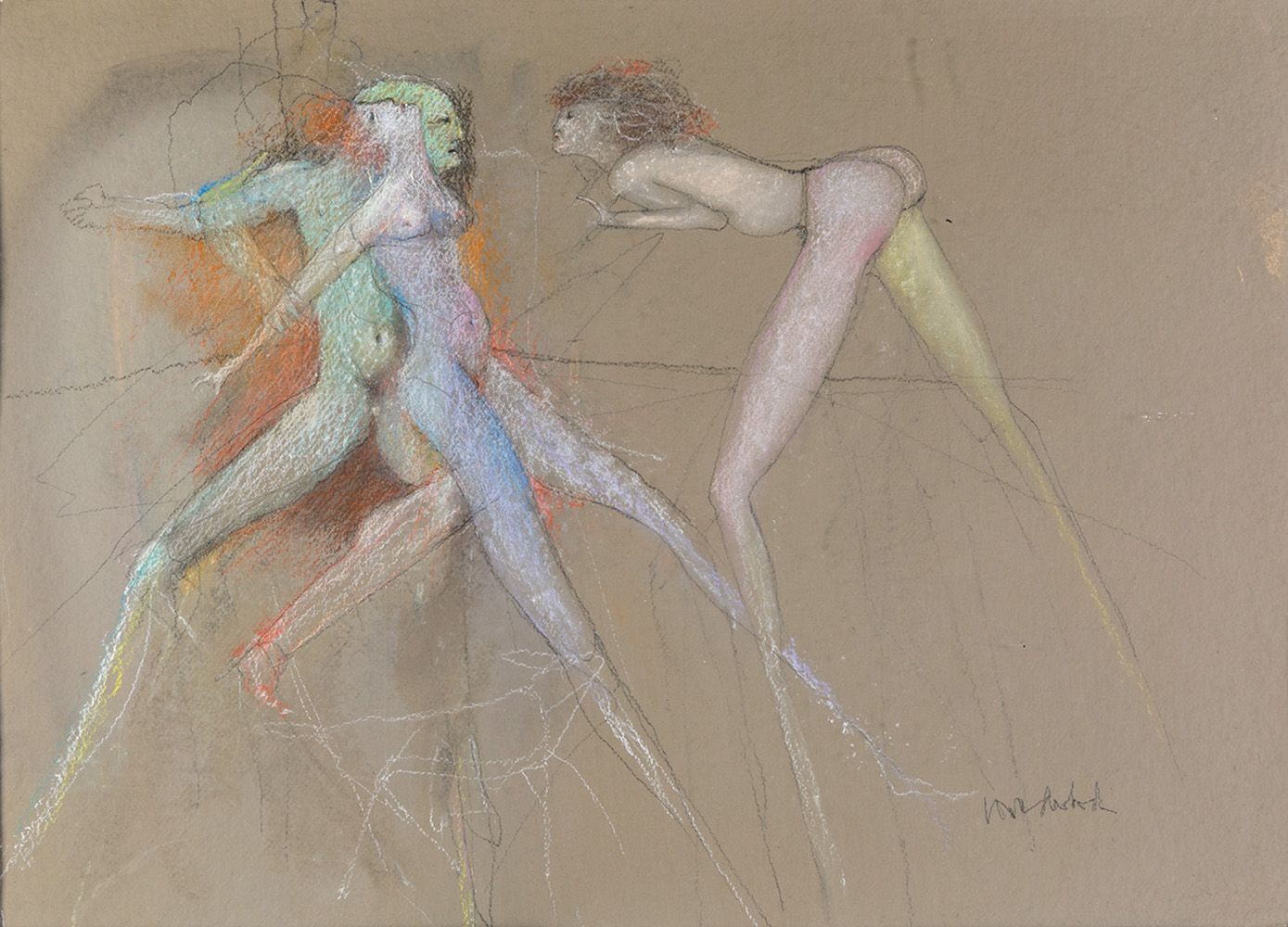Description
PAUL WUNDERLICH (Eberswalde, 1927-Saint Pierre de Vassols, 2010). "Characters". Mixed media on paper. Signed in the lower right corner. Measurements: 50 x 70 cm; 76,5 x 96,5 cm (frame). Painter, sculptor and graphic artist, his style is halfway between surrealism, erotic art and mythological references. Trained alongside William Tietze, Horst Janssen and Reinhard Drenkhahn, in 1951 he worked as a lecturer at the Hochschule für bildende Künste Hamburg, teaching lithography and engraving. Also in 1951 he printed for Emil Nolde ("The King and His Men", engraving) and in 1952 for Oskar Kokoschka, the graphic suite "Ann Eliza Reed" of eleven lithographs. In 1955 he received a grant from the Cultural Committee of German Industry. After an essentially realist creative period around 1959, he developed his characteristic style. His early works show a dismembered, disproportionate body against an empty background. In the 1960s he was influenced by art movements such as Art Deco and Art Nouveau. In 1961 he moved to Paris, where he worked in the Deskjoberts studio. In 1963 he returned to Hamburg and, as successor to George Gresko, he taught at the Hochschule until 1968. In 1969 he began creating bronze sculptures and statues, influenced by Salvador Dalí.
33
PAUL WUNDERLICH (Eberswalde, 1927-Saint Pierre de Vassols, 2010). "Characters". Mixed media on paper. Signed in the lower right corner. Measurements: 50 x 70 cm; 76,5 x 96,5 cm (frame). Painter, sculptor and graphic artist, his style is halfway between surrealism, erotic art and mythological references. Trained alongside William Tietze, Horst Janssen and Reinhard Drenkhahn, in 1951 he worked as a lecturer at the Hochschule für bildende Künste Hamburg, teaching lithography and engraving. Also in 1951 he printed for Emil Nolde ("The King and His Men", engraving) and in 1952 for Oskar Kokoschka, the graphic suite "Ann Eliza Reed" of eleven lithographs. In 1955 he received a grant from the Cultural Committee of German Industry. After an essentially realist creative period around 1959, he developed his characteristic style. His early works show a dismembered, disproportionate body against an empty background. In the 1960s he was influenced by art movements such as Art Deco and Art Nouveau. In 1961 he moved to Paris, where he worked in the Deskjoberts studio. In 1963 he returned to Hamburg and, as successor to George Gresko, he taught at the Hochschule until 1968. In 1969 he began creating bronze sculptures and statues, influenced by Salvador Dalí.
